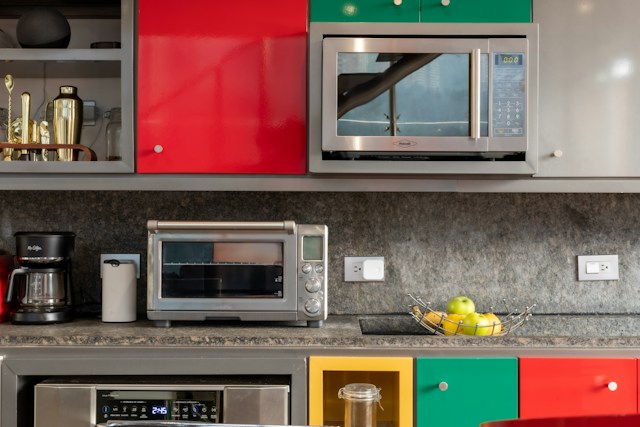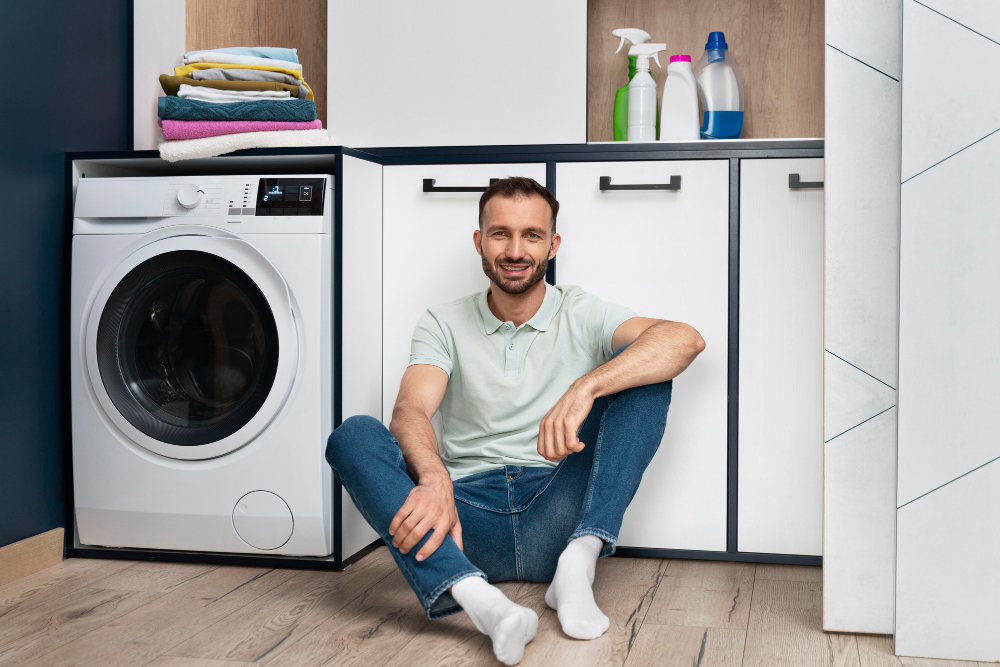How To Fix Common Oven Problems
You’ve probably been there – halfway through a recipe, your oven decides to quit. It’s frustrating, isn’t it?
Don’t worry! This guide will walk you through how to fix common oven problems. Whether it’s heating issues, temperature inconsistencies, door problems, or annoying noises, you’ll learn how to troubleshoot and solve these problems.
So, roll up your sleeves; it’s time to become your own repair expert!
Identifying Common Oven Problems
Before you can tackle any oven repair, you’ll first need to identify the problem. Common issues include oven light malfunctions and ignitor problems. If you notice your oven light flickering or not turning on at all, it’s not just an inconvenience; it could indicate a more serious issue.
Similarly, if your oven isn’t heating up, you might be dealing with a faulty ignitor. It’s not something you can ignore, as it directly impacts your oven’s performance. In both cases, you’ll need to do a bit of troubleshooting. Don’t be intimidated. With the right guidance, you can identify and resolve these issues.

Troubleshooting Oven Heating Issues
When your oven’s not heating up as expected, it’s crucial to pinpoint the root of the problem quickly and accurately. Understanding heating elements is key to troubleshooting. If they’re not glowing red hot, they could be the issue. They’re usually located at the top and bottom of your oven.
Next, conduct oven sensor checks. The sensor measures the oven temperature and communicates with the control board. It’s usually a small rod on the back wall. If your oven’s not heating properly, the sensor could be faulty.
Remember, safety is paramount. Disconnect the oven from power before you start. If you’re not comfortable doing these checks, it’s best to call a professional.
With a few checks, you can quickly find the source of your oven’s heating issues.
Fixing Oven Temperature Inconsistencies
Now that you’ve checked your oven’s heating elements and sensors, let’s tackle any temperature inconsistencies you’re experiencing.
One of the first things you might want to do is calibrating the thermostat. This can be a bit tricky, so make sure to consult your oven’s manual for specific instructions.
If the problem persists, it’s worth considering replacing the oven sensor. It’s a key component that monitors the oven’s temperature. If it’s faulty, your oven won’t heat correctly. You can usually find a replacement sensor online or at a local appliance parts store.
Resolving Oven Door Problems
If your oven door isn’t shutting properly, you’ve got another common issue on your hands. This can lead to heat escaping and uneven cooking. Don’t worry, we’re here to guide you through the troubleshooting process.
Often, the problem can be fixed with simple hinge adjustments. Check if the hinges are aligned and functioning. If they’re bent or broken, you’ll need to replace them.
However, if your door is still not closing properly, you might need door seal replacements. The seal is what keeps the heat inside the oven, and over time, it can become worn or damaged. Replacing it’s usually straightforward. You can find replacements online or at your local hardware store.
Dealing With Oven Noise Issues

During your oven’s operation, you might notice an unusual noise, which can be a sign of mechanical issues that need attention. Noise source identification is the first step. Listen closely—is it a constant hum or an intermittent clanging? Once you’ve identified the type of noise, you can figure out its source. Your oven’s fan, motor, or heating element might be the culprit.
Next, consider soundproofing techniques. If the noise is due to vibration, adding anti-vibration pads under your oven may help. If it’s a fan or motor issue, you might need to replace or repair the part. Remember, if you’re not confident doing this yourself, it’s best to call a professional. You don’t want to risk further damaging your oven or voiding its warranty.
Frequently Asked Questions
What Should I Do if the Oven’s Self-Cleaning Function Isn’t Working Properly?
If your oven’s self-cleaning function isn’t working, you’ll need to apply troubleshooting techniques. Check the door latch, temperature sensors, or control board. Remember, don’t attempt repairs you’re not comfortable with; it’s okay to call a professional.
How Can I Deal With Electrical Problems in My Oven?
If you’re dealing with electrical issues in your oven, check for oven wiring problems. Power supply troubles could also be the culprit. Always remember to disconnect from the power source before inspecting. Consult a professional if needed.
How Can I Fix an Oven That Is Not Cooking Food Evenly?
You’re dealing with uneven cooking? Try adjusting your oven rack placement or checking your oven’s temperature calibration. It’s possible the heat isn’t distributing evenly, or the temperature isn’t accurate.
What Steps Should I Take if My Oven’s Timer Is Malfunctioning?
If your oven’s timer’s acting up, start by troubleshooting timer issues. Unplug and reset your oven. If it’s still not working, consider timer replacement options. Always consult a professional if you’re unsure.
What Should I Do if My Oven’s Light Isn’t Working?

If your oven’s light isn’t working, it could be due to bulb replacement or light switch issues. Firstly, try changing the bulb. If that doesn’t solve it, check your light switch for any problems.
Conclusion
So, you’ve learned how to tackle common oven issues, from heating troubles to pesky noise problems.
Remember, a well-maintained oven is key to a smoothly running kitchen.
But, don’t forget, if you’re in over your head, there’s no shame in calling a professional. After all, sometimes it’s better to be safe than sorry.
Keep your oven in top shape, and you’ll be whipping up delicious meals in no time!
